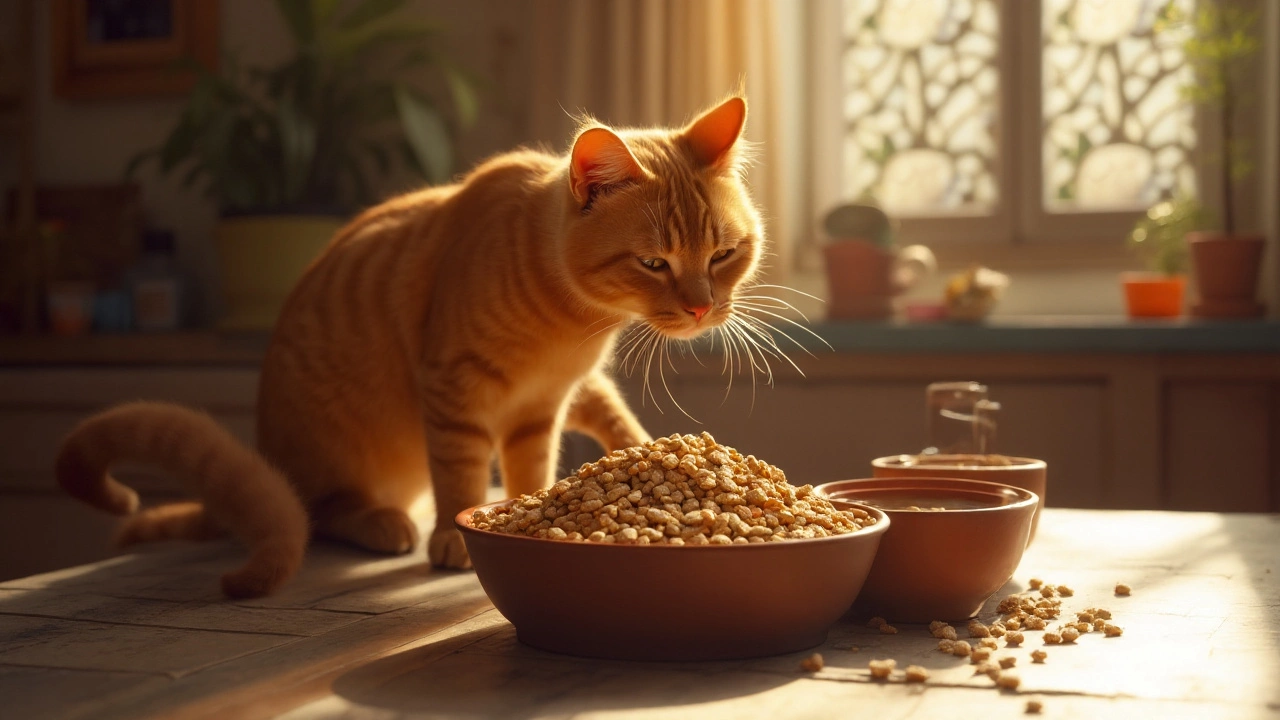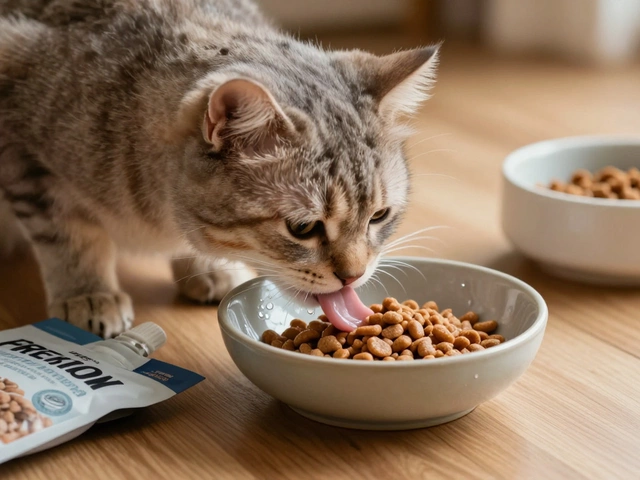Dry Food Pros and Cons for Your Dog (and Cat)
If you’re scrolling through pet aisles, you’ve probably wondered whether dry kibble is the right choice. It’s cheap, easy to store, and lasts forever, but does it give your furry friend everything they need? Let’s break down the real upside and the hidden downsides so you can decide what to put in the bowl.
The Upsides of Dry Food
First off, dry kibble is a convenience powerhouse. One scoop feeds a whole day, and you can leave it out for a picky eater without worrying about spoilage. The low moisture content means the carbs and proteins stay stable, so the nutrition label stays accurate from the moment you open the bag.
Second, the crunchy texture isn’t just for fun – it helps scrape plaque off teeth. Many vets say that regular kibble can reduce tartar buildup compared to a soft, wet diet.
Third, cost matters for families with multiple pets. A 30‑lb bag of quality dry food often costs less per serving than wet trays or fresh‑prep meals. That savings can free up money for toys, grooming, or vet visits.
Finally, dry food is easy to portion. Most brands provide a feeding chart, and you can use a measuring cup to keep calories in check, which is key for weight management.
The Drawbacks You Should Watch
On the flip side, the low water content can be a problem, especially for dogs that don’t drink much. Dehydration can creep up and lead to urinary issues. Adding a splash of water or broth to the kibble can help, but it also reduces the crunchy tooth‑scrubbing benefit.
Some dry formulas rely heavily on fillers like corn or wheat. Those ingredients can be harder to digest and may trigger allergies in sensitive pups. Look for a short ingredient list with real meat listed first.
Another issue is that high‑heat processing can strip away some nutrients. While most brands add vitamins back in, the natural enzymes and antioxidants found in fresh foods can be lost.
If your pet is a senior or has dental problems, the hard kibble can be uncomfortable to chew. In those cases, mixing in a softer topper or switching to a grain‑free soft kibble may be kinder.
Lastly, “cheap” kibble often means lower quality protein and more artificial additives. Skipping the cheap stuff and investing a bit more can pay off in better coat, energy, and fewer vet trips.
Bottom line: dry food shines when you need convenience, cost‑effectiveness, and a bit of dental help. It falls short when your pet needs extra moisture, high‑quality protein, or a diet free of fillers. By pairing kibble with fresh water, occasional wet meals, or a safe topper, you can capture the pros while muting the cons.
Now that you know the trade‑offs, you can tailor the bowl to match your pet’s age, health, and lifestyle. Happy feeding!

Can Cats Live on Dry Food Alone? Pros, Cons & Best Practices for Feline Diet
Do cats thrive on dry food only? Learn the facts, science, pros and cons of an all-dry kibble diet for your feline, and what vets really say about it.
read more



